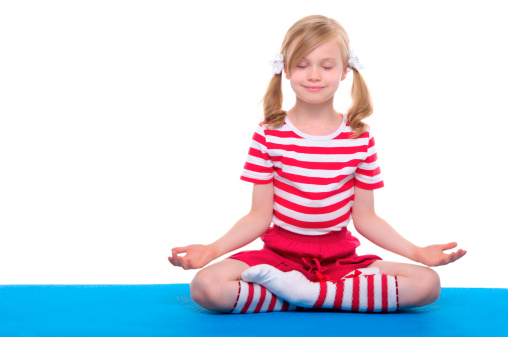 Introducing yoga into public schools isn't happening without a fight - and Increasing complaints from parents and accusations that schools are endorsing religious practices is beginning to have an effect on programs across the country.
Introducing yoga into public schools isn't happening without a fight - and Increasing complaints from parents and accusations that schools are endorsing religious practices is beginning to have an effect on programs across the country.The Atlantic is reporting on an uptick in the number of schools embroiled in yoga disputes due to parents protesting the inclusion of a practice considered integral to the practice of Hinduism.
In 2016, Bullard Elementary School in Cobb County, Georgia found itself on the receiving end of push back from parents who were incensed to learn that their children were being introduced to “destressing” techniques such as yoga and mindfulness in school. As a result, the school was forced to make changes such as stripping the “namaste” bow out of their yoga classes. The school also agreed to stop allowing students to color mandalas which are spiritual symbols in Hinduism and Buddhism. Although the school denied it, children were supposedly taught about crystals having healing power. After parents complained, the school issued a statement saying that although teachers “never used nor taught about crystals having healing powers . . . we understand it has become a belief. Therefore we will ensure that nothing resembling this will be done in the future.” As for the mindfulness, parents were invited to become a part of any future discussions about the inclusion of mindfulness in the school’s curriculum.
In 2013, a group of parents sued the Encinitas Unified School District (EUSD) in San Diego County California for incorporating yoga into the school and allowing children who opted out of the group to be disadvantaged. Students were being forced to attend Ashtanga yoga classes during school time which, according to lawyers representing the parents, amounted to adopting a state religion and forcing it on children. The program was sponsored by Sonima (formerly known as the Jois Foundation) which claims as its mission the promotion of Ashtanga yoga, particularly to schoolchildren. Even though the judge in the case stated his grave concerns about the mission of the Foundation, he allowed the classes to continue. But the issue arose again two years ago when parents complained that it was a poor use of public funds in schools that were already financially strained. The future of the program remains uncertain.
Just last month, a Hindu activist named Rajan Zed said he wanted to overturn a 1993 law banning yoga in public schools in that state; however, a spokesman for the Alabama Education Department said there were no plans to change the rule. The ban also prohibits hypnosis and meditation in schools.
Proponents of yoga and mindfulness cite research that vouches for the benefits of these programs but serious questions have been raised about the veracity of these studies. Those concerns are so serious, in fact, that 15 prominent researchers issued a statement in October 2017 calling for “more rigor and less hype” in the promotion of mindfulness meditation.
“Misinformation and poor methodology associated with past studies of mindfulness may lead public consumers to be harmed, misled and disappointed,” the experts wrote.
Parents are rightfully concerned about the introduction of these practices to their children due to the physical and spiritual risks they pose.
“No prayer in schools. Some don’t even say the Pledge [of Allegiance], yet they’re pushing ideology on our students,” said Susan Jaramillo, the mother of a Bullard Elementary student to a local journalist. “Some of those things are religious practices that we don’t want our children doing in our schools.”
Thus far, yoga has made deep inroads into our nation’s so-called “secular” schools. As the Atlantic reports, a 2015 survey identified three dozen programs in the United States that reach 940 schools and more than 5,400 instructors. Researchers predicted the programs would grow in popularity – but adoption appears to be uneven across the U.S.
For example, the 2015 survey found the programs were mostly in big cities on the east and west coasts such as in Los Angeles and New York City and a few other “New Age-y” areas such as Colorado and the Northwest U.S.
However, in America’s heartland, such as in Alabama where only 10 percent of the population has ever taken a yoga class, it’s almost unheard of.
The bottom line is that the outcry from concerned parents is making a difference and is not only stemming the tide, but is managing to push it back in some areas.
In the very least, they are making sure that yoga and mindfulness are surrounded by enough controversy to make educators think twice about inviting these practices into their schools.
© All Rights Reserved, Living His Life Abundantly®/Women of Grace® http://www.womenofgrace.com
